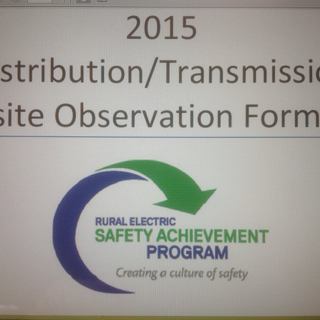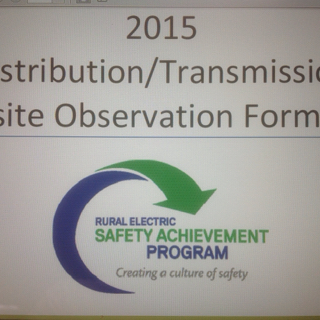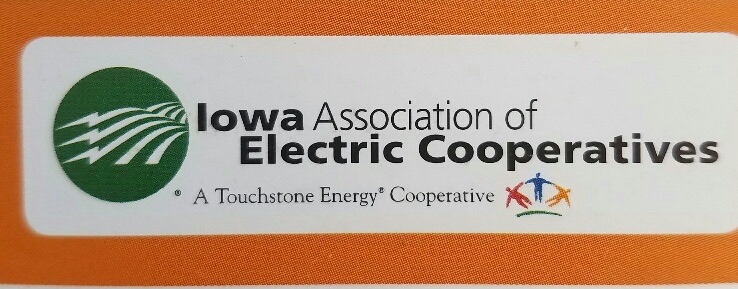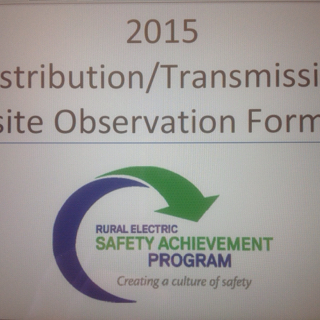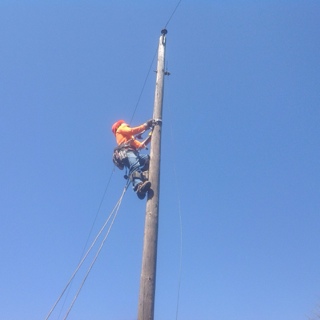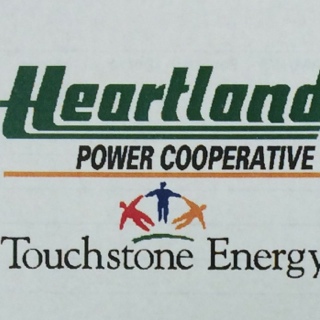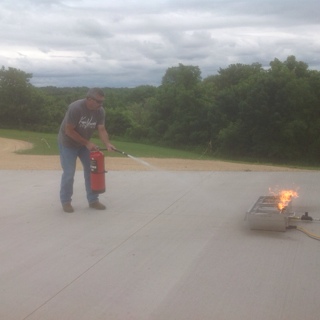Title Page
-
Cooperative Name
-
Location
-
- Main Facility
- Outpost
-
Conducted on
-
Prepared by
Section 2: Common Facility Safety Equipment and Issues
-
2.1 Stairs, landings and steps are free of any impediments, edges easy to discern, and allow safe movement in any direction<br><br>Criteria: <br>* Handrails are properly secured and meet regulatory requirements 30/33<br>*Steps and risers are uniform<br>*Steps are well lit and marked as needed for visibility<br><br>Ref: 29 CFR 1910.23<br>
-
2.2 Docks and safety rails are in good condition and meet regulatory requirements.<br><br>Criteria: <br>* Safety rails or barriers are in place for docks with 48" or more elevation<br>*Wheel chocks or other means are available for securing vehicles while loading or unloading<br>*Dock plates or ramps are available to bridge the gaps when using lift trucks.<br><br>Rf: 29 CFR 1910.23
-
2.3 Proper trash containers are readily available, are sufficient size for facility areas, and show evidence of proper use.<br><br>Criteria: <br>* Inside trash containers appear to be emptied on a frequent basis.<br>* Outside trash containers are emptied on a scheduled basis.<br>* used and oily rags are contained in metal self-closing containers that are emptied daily.<br><br>Ref: 29 CFR 1910.141(a)(3); 29 CFR 1910.22(a)
-
2.4 Hazard identification markings are in use as needed and meet the current requirements for background and letter coloring, size, shape, and appropriate levels of warning for the application involved.<br><br>Criteria:<br>*Danger, Warning and Caution and informational types are used when appropriate<br>* Low clearances, floor openings, uneven surfaces, docks, walkways or hazardous work zones are clearly marked<br><br>Ref: 29 CFR 1910.145; ANSI Z535
-
2.5 Hand trucks or hand carts are available and of suitable capacity for handling materials commonly stored in each area.<br><br>Criteria: <br>* Hand trucks or carts are well maintained and found in very good condition.<br>* Clearly marked with capacity ratings
-
2.6 Portable step devices are of adequate capacity commercial grade and designed for the typical use and the users in the area.<br><br>Criteria:<br>* Ref: 29 CFR 1910.29
-
2.7 Facility lighting levels and types are ideal for the work area functions and expected activities and 95% of fixtures are operational<br><br>Ref: 29 CFR 1826.56(a)
-
2.8 Emergency egress and access lighting is available from backup generation or batteries in facilities that are routinely occupied by employees or the public.<br><br>Ref: 29 CFR 1910 Subpart E: 29 CFR 1910.37(b)(6)
-
2.9 Minimum capacity and appropriate category fire extinguishers are available in all facilities, are very easy to access, inspected monthly, and are ready for emergency use.<br><br>Criteria:<br>* All facilities have minimum 60 B:C (10 lbs) fire extinguishers within 75' of any locations, unless other requirements apply.<br>* Fire extinguishers are located within 50' of flammable storage areas or parts washers.<br>* Fire extinguishers are located within 25' of welding work areas and fixed battery charging locations.<br>* When possible, fire extinguishers are located near exits or emergency paths where access is also conducive to user escape.<br>* Fire extinguishers in the vicinity of data centers, data equipment, or electronic controls are of an extinguishing type suitable for these locations.<br>* Fire extinguishers in the vicinity of combustable, flammables, or electrical sources are matched for the type of extinguishing agent.<br><br>Ref: 29 CFR 1910.157; NFPA 10
-
2.10 Minimum capacity, type, and numbers of fire extinguishers are found in consistent locations on utility vehicles and equipment. And all units are inspected monthly to be ready for emergency use.<br><br>Criteria: <br>* Vehicles less than 10,000 lbs GVWR are equipped with minimum 1 each 10 B:C (5 lbs) fire extinguisher<br>* Commercial vehicles 10,000 lbs and more GVWR are equipped with a minimum 2 each 60 B:C (10 lbs) fire extinguishers in separate locations.<br>* All miscellaneous equipment with 25 or more horsepower engines and fuel are equipped with minimum 1 each 10 B:C (5 lbs) fire extinguisher.<br>* Fire extinguishers that are ready for use shall have an indicator that shows a full charge, a pin to lock the handle, a seal to secure the pin, and the dispensing nozzle that is free of any foreign material.
-
2.11 Fire sprinkler systems are fully operational and inspected annually according to all requirements.<br><br>Criteria:<br>* Systems are charged with extinguishing agent as required by the system<br>* Systems are capable of being flushed and purged.<br>* Sprinkler heads are located at minimum 18" from any obstruction, stored materials, or facility structure that would interfere with the discharge.<br><br>Ref: 29 CFR 1910.1
-
2.12 All facility doors and intended emergency pathways leading to the outside are unobstructed, capable of being used at any time from the inside, and clearly labeled as an exit or to an exit.<br><br>Criteria: <br>* Doors and pathways leading to the outside that are not suitable exits shall be marked with not an exit sign.<br>* All exit signs shall be fully operational and illuminated internally or externally.<br>* Exit signs are the proper type, size, and sign configuration<br><br>Ref: 29 CFR 1910 Subpart E
-
2.13 First Aid, CPR and Bloodborne Pathogen Kits or Stations are readily available at each work location, meeat all the applicable standards, and are adequate to serve the emergency needs as anticipated.<br><br>Criteria:<br>*Kit locations are identified with signs or markings on operational vehicles<br>* Kits or stations have a checklist and corresponding supply of critical items that match the user training levels for handling first aid, CPR and bloodborne pathogen type emergencies.<br>* Interviewed employees are familiar with location of these kits or stations and also familiar with the use of the equipment and supplies.<br>* First aid kits and stations also contain the recommended materials necessary to handle bloodborne pathogen and CPR emergencies<br>* First aid kits and stations are very clean, well organized, and the equipment and supplies are inspected monthly in preparation for emergency use.<br><br>Ref: 29 CFR 1910.151; and 29 CFR 1910.269(b) through (b)(1)(ii)
-
2.14 Automatic External Defibrillators (AED's) are available for cardiac emergencies and ready for emergency use in facilities.
-
2.15 AEDs are available for cardiac emergencies and ready for use on vehicles.<br><br>Criteria:<br>* Interviewed employees are familiar with the location and use of these units.<br>* Unit is included on a monthly inspection of safety items that are checked.
-
2.16 Plumbed eyewash and/or body drenching equipment is located in areas with chemical hazards, ready for emergency use if water is available.<br><br>Criteria:<br>*Ready for emergency use includes a weekly operational inspection, documented.<br>* Readily available is defined as within 10 seconds of the hazard zone or work activity that a unit is intended to cover.<br>* Water at plumbed equipment is supplied for a minimum of 15 minutes continuous flushing and meets the current required temperature range (between 60 - 100 degrees F) throughout the flushing/drenching cycle.<br><br>Ref: 29 CFR 1910.151(c): ANSI Z352.1 - 2009
-
2.17 When eyewash is warranted, self-contained/portable eyewash equipment is available for emergency use when water supply is not.<br><br>Criteria: <br>* Fluid is within recommended dates for safe use.<br>* Unit is inspected per manufacture's recommendations.<br><br>Ref: 29 CFR 1910.151(c): ANSI Z358.1-2009
-
2.18 Elevators and elevator controls are fully operational, free of any stored materials, maintained and inspected annually as required.<br><br>Ref: 29 CFR 1917.116: ANSI A17.2 - 60
-
2.19 All facility and vehicle ladders are found in good condition with commercial use class, capacity ratings, and setup instructions that are clear and fully legible.<br><br>Criteria:<br>* Ladders are free of any damaged components.<br>* Electric utility ladders that can conceivably be used for energized work are constructed with non conductive materials.<br>* Ladders are used and stored in a manner that will prevent damage to this equipment.<br>* Ladders are not exhibiting a condition known as fiber bloom. A blooming ladder, once damp or wet, can conduct up to half the voltage it comes in contact with.<br>* Interviewed employees can explain several critical ladder inspection details.<br><br>OSHA Standard 29 CFR 1910.25: 1910.26; 1910.27 and 29 CFR 1910.269(h)
-
2.20 Cranes and overhead lifting devices are inspected by the operators before each use and annually documented by a certified inspector.<br><br>Criteria:<br>* Evidence of annual inspection is readily available upon request.<br>* Interviewed crane equipment users can explain key items inspected before each use.<br><br>Ref: 29 CFR 1910.179(j)
-
2.21 Floor hoist, jack, and jack stands are clearly marked with capacity ratings and are found in good, usable condition.<br><br>Ref: 29 CFR 1910.244(a)
-
2.22 Battery charging areas/rooms are properly equipped and maintained.<br><br>Criteria:<br>* Battery charging areas/rooms have no smoking and eye and face protection required signage.<br>* Battery charging area/rooms have proper ventilation and racks or trays resistant to electrolyte.<br>* Eye and face protection, chemical gloves, and chemical aprons are provided in battery charging areas/rooms.<br><br>Ref: 29 CFR 1910.178
-
2.23 Portable battery chargers are in good condition and clearly marked with no smoking and eye protection required signs.
-
2.24 Pole loading procedures call for the use of slings and/or pole lifting tongs that are inspected prior to use. Pole lifting tongs are rated with proper lifting capacity, employs a closed or locking keeper and a trip line design to keep personnel out of loading area while loading and unloading poles.<br><br>Criteria: <br>* Traditional skidding tongs are not considered a proper tool for loading and unloading poles.
Section 2: SUMMARY
-
2.25 The overall evaluation of the onsite field observation team for this section of the assessment is as follows:<br><br>Criteria:<br>* Strong performance - Questions evaluated as exceeds or satisfies all requirements<br>* Satisfactory performance - Questions evaluated as satisfies all requirements, could be a small number evaluated as exceeds.<br>* Generally satisfactory with minor areas for improvement - Questions evaluated as satisfies all or most requirements, improvement areas are minor.<br>* Ket attentions areas for improvement - Questions evaluated as partially satisfies or fails to satisfy requirements in important improvement areas.
IAEC Safety Personnel Signature
-
John Dvorak
-
Matt Pociask
-
Jim Wolfe
-
Scott Meinecke
